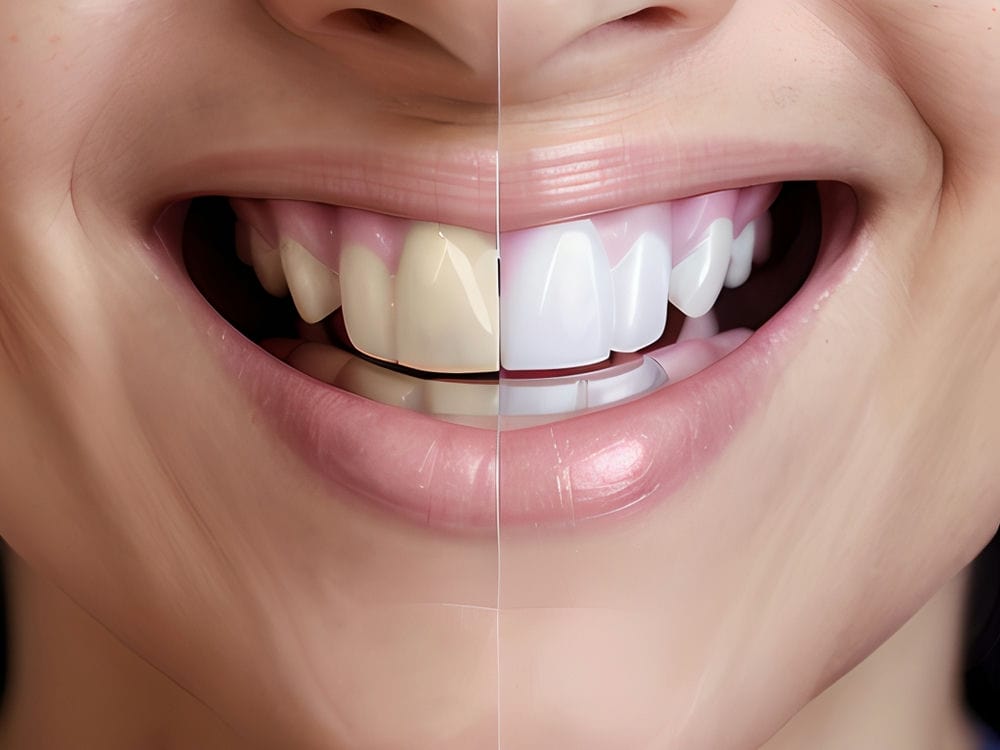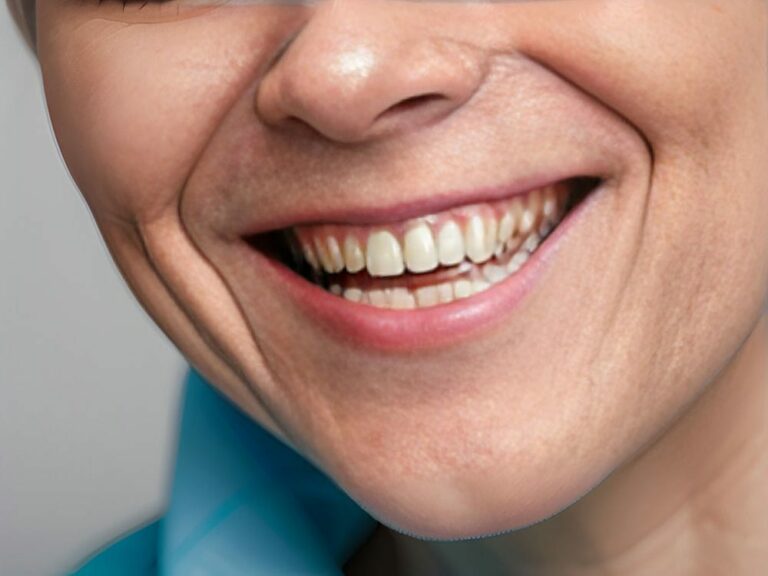Introduction to Advanced Dental Materials: Exploring the Latest Innovations for Long-Lasting Restorations
Introduction to Advanced Dental Materials: Exploring the Latest Innovations for Long-Lasting Restorations
When it comes to dental restorations, longevity and durability are of utmost importance. Dental materials have come a long way in recent years, with advancements in technology leading to the development of revolutionary materials that offer exceptional strength and aesthetic appeal. From ceramics to polymers to bioactive materials, dentists now have a wide array of options at their disposal for creating restorations that can withstand the test of time.
One such material that has gained popularity in the field of dentistry is ceramic. Ceramic restorations, such as crowns and veneers, are known for their natural-looking appearance and exceptional strength. These restorations are made from high-quality porcelain or zirconia, which can be customized to match the color and shape of natural teeth. Not only do ceramic restorations provide excellent aesthetics, but they also offer superior durability, making them an ideal choice for long-lasting restorations.
In addition to ceramics, polymers have also emerged as a revolutionary dental material. Polymers are synthetic materials that can be easily molded and shaped to create various dental restorations like dentures and fillings. They offer several advantages over traditional materials, including increased flexibility and resistance to wear and tear. Furthermore, polymers are highly biocompatible, meaning they are less likely to cause allergic reactions or other adverse effects in patients. With their versatility and longevity, polymer-based restorations have become a go-to option for many dental professionals.
Another innovative class of dental materials is bioactive materials. These unique substances have the ability to interact with biological tissues in the mouth, promoting healing and regeneration. Bioactive materials contain elements like calcium phosphate or fluoride, which can aid in remineralization and prevent tooth decay. They also release ions that have antibacterial properties, reducing the risk of infection or inflammation around dental restorations. With their ability to support oral health and promote tissue regeneration, bioactive materials are paving the way for a new era of long-lasting restorations that not only look great but also contribute to overall oral wellbeing.
In conclusion, the field of dentistry has witnessed significant advancements in dental materials, offering dentists an array of options for creating long-lasting restorations. Materials like ceramics provide exceptional strength and aesthetic appeal, while polymers offer flexibility and resistance to wear and tear. Bioactive materials, on the other hand, interact with biological tissues and promote healing. By harnessing the power of these revolutionary materials, dental professionals can ensure that their patients receive restorations that not only stand the test of time but also contribute to their overall oral health.
The Role of Cutting-edge Technologies in Revolutionizing Dental Materials
The development of cutting-edge technologies has played a crucial role in revolutionizing dental materials. Nanotechnology, in particular, has had a significant impact on the field of dentistry. By manipulating materials at the nanoscale level, researchers have been able to enhance the properties of dental materials, making them stronger and more resistant to wear and tear. For example, nanocomposites have been developed that combine the strength of ceramics with the flexibility of polymers, resulting in restorations that are both durable and aesthetically pleasing.
Another area where technology has made a significant difference is in adhesive bonding techniques. Traditionally, dental restorations were held in place by mechanical retention alone. However, advancements in adhesive technology have allowed for stronger and more reliable bonding between restorative materials and natural teeth. Adhesive bonding techniques involve the use of special dental adhesives that create a strong bond between the restoration and tooth structure. This not only improves the longevity of restorations but also allows for more conservative treatment options as less tooth structure needs to be removed.
Overall, the integration of advanced technologies into dental materials has revolutionized the field by enhancing their strength, aesthetics, and longevity. Nanotechnology has allowed for the development of new materials with superior properties, while adhesive bonding techniques have improved the bond between restorations and natural teeth. These advancements have not only expanded treatment options for patients but also improved overall outcomes in terms of durability and esthetics.
By harnessing these cutting-edge technologies alongside revolutionary dental materials like ceramics, polymers, and bioactive materials, dentists can provide their patients with long-lasting restorations that offer exceptional strength, aesthetic appeal, and contribute to their oral health.
Understanding the Benefits of Innovative Composite Materials for Long-lasting Restorations
The development of innovative composite materials has revolutionized the field of dentistry, providing dentists with a wide range of options for long-lasting restorations. These materials offer several benefits, including exceptional strength, durability, and esthetics.
One of the key advantages of innovative composite materials is their strength. These materials are designed to withstand the forces exerted during chewing and biting, ensuring that restorations remain intact even under significant pressure. This strength is crucial in ensuring the longevity of restorations, as it prevents them from breaking or wearing down prematurely.
In addition to strength, innovative composite materials also offer excellent durability. They are resistant to wear and tear, meaning that restorations made from these materials can withstand the daily stresses of eating, drinking, and speaking without deteriorating over time. This durability ensures that patients can enjoy their restorations for many years without needing frequent replacements.
Furthermore, innovative composite materials excel in terms of esthetics. They can be color-matched to natural teeth, allowing for seamless integration with the patient’s smile. This aesthetic appeal is essential in dental restorations as it ensures a natural-looking result that blends in seamlessly with the surrounding teeth.
By utilizing these innovative composite materials, dentists can provide their patients with long-lasting restorations that offer exceptional strength and durability while maintaining an aesthetically pleasing appearance. These materials have truly revolutionized the field of dentistry by improving treatment outcomes and enhancing patient satisfaction.
Exploring Revolutionary Techniques in Dental Material Engineering: Enhancing Durability and Aesthetics
In recent years, dental material engineering has seen significant advancements, leading to the development of revolutionary techniques that enhance both durability and aesthetics in restorations. These techniques utilize innovative composite materials that offer a unique combination of strength, resilience, and resistance.
One of the key aspects of these techniques is their focus on biocompatibility. Dental restorations made from these innovative composite materials are designed to be compatible with the patient’s oral environment, minimizing the risk of allergic reactions or other adverse effects. This biocompatibility ensures that patients can enjoy their restorations without any discomfort or complications.
Another important feature of these techniques is their emphasis on resilience. The innovative composite materials used in these techniques have a high level of resilience, allowing them to withstand the daily wear and tear experienced by dental restorations. This resilience ensures that the restorations maintain their shape and functionality over time, reducing the need for frequent repairs or replacements.
Furthermore, these techniques incorporate materials with exceptional resistance properties. The innovative composites used in these techniques are highly resistant to staining, discoloration, and decay. This resistance ensures that the restorations maintain their natural appearance and functionality for an extended period.
Through the utilization of these revolutionary techniques in dental material engineering, dentists can provide their patients with long-lasting restorations that not only offer exceptional strength and durability but also maintain a natural aesthetic appeal. These advancements have truly transformed the field of dentistry by improving treatment outcomes and enhancing patient satisfaction without compromising on biocompatibility or long-term performance.
Unveiling the Science behind Long-lasting Restorations: How Revolutionary Dental Materials are Engineered
As dental material engineering continues to advance, the efficacy of long-lasting restorations is being revolutionized. These advancements are made possible through the utilization of innovative composite materials that offer a unique combination of strength, resilience, and resistance.
One key aspect of these revolutionary materials is their exceptional translucency. This allows them to mimic the natural appearance of teeth, ensuring that restorations seamlessly blend in with the surrounding dentition. With this level of optical excellence, patients can confidently smile without any visible signs of dental work.
Furthermore, these composite materials are engineered to provide optimal strength and durability. They can withstand the daily forces exerted during chewing and speaking, ensuring that restorations remain intact for an extended period. This enhanced durability reduces the need for frequent repairs or replacements, improving patient satisfaction and convenience.
By incorporating these revolutionary dental materials into their practice, dentists can provide their patients with long-lasting restorations that not only offer exceptional strength and durability but also maintain a natural aesthetic appeal. These advancements in dental material engineering have truly transformed the field by improving treatment outcomes and enhancing patient satisfaction without compromising on efficacy or optical excellence.
The Future of Dental Restorations: Harnessing the Potential of Advanced Material Technologies
Advancements in dental material technologies have paved the way for the future of dental restorations. These innovative materials possess unique properties that make them highly desirable for long-lasting restorations. One of these properties is exceptional wear resistance, which ensures that restorations can withstand the daily wear and tear from chewing and speaking.
The wear resistance of these advanced dental materials is crucial in improving the longevity of restorations. With their superior durability, patients can rely on their restorations to remain intact and functional for an extended period without the need for frequent repairs or replacements. This not only enhances patient satisfaction but also offers convenience by reducing the number of dental visits required.
In addition to wear resistance, these revolutionary materials also offer other desirable properties such as excellent strength and resistance to fracture. This means that restorations made from these materials are less likely to chip or break, further increasing their durability. The combination of wear resistance, strength, and fracture resistance makes these materials ideal for long-lasting restorations that can withstand the rigors of everyday use.
With ongoing advancements in material technologies, the future of dental restorations looks promising. Dentists will be able to harness the potential of these advanced materials to provide their patients with durable and aesthetically pleasing restorations that stand the test of time. By staying up-to-date with the latest advancements in dental material engineering, dentists can ensure that they are offering their patients the best possible treatment options for long-lasting oral health.
Breakthroughs in Dental Material Research: Paving the Way for Enhanced Longevity and Functionality
The future of dental restorations looks promising thanks to breakthroughs in dental material research. These advancements are paving the way for enhanced longevity and functionality of dental restorations. One area of focus in this research is improving the aesthetics of dental materials, ensuring that restorations not only perform well clinically but also look natural and appealing.
In recent years, researchers have made significant progress in developing dental materials that closely mimic the appearance of natural teeth. These materials can be color-matched to blend seamlessly with the patient’s existing dentition, creating a more aesthetically pleasing result. This is particularly important for restorations in visible areas such as the front teeth, where appearance plays a crucial role in patient satisfaction.
In addition to improved aesthetics, these advanced dental materials also offer enhanced clinical performance. They are designed to withstand the demands of daily use, offering exceptional durability and resistance to wear and tear. This means that patients can rely on their restorations to remain functional and intact for an extended period without frequent repairs or replacements. The combination of aesthetics and clinical performance makes these revolutionary materials highly desirable for long-lasting restorations.
With ongoing advancements in dental material research, the future holds even greater potential for enhancing the longevity and functionality of dental restorations. Dentists can look forward to utilizing these innovative materials to provide their patients with durable and aesthetically pleasing solutions that meet their oral health needs. By staying abreast of the latest developments in dental material engineering, dentists can offer their patients the best possible treatment options for long-lasting oral health without compromising on aesthetics or clinical performance.
Key Considerations When Choosing Revolutionary Dental Materials for Lasting Restorations
The future of dental restorations looks promising thanks to breakthroughs in dental material research. These advancements are paving the way for enhanced longevity and functionality of dental restorations. One area of focus in this research is improving the aesthetics of dental materials, ensuring that restorations not only perform well clinically but also look natural and appealing.
In recent years, researchers have made significant progress in developing dental materials that closely mimic the appearance of natural teeth. These materials can be color-matched to blend seamlessly with the patient’s existing dentition, creating a more aesthetically pleasing result. This is particularly important for restorations in visible areas such as the front teeth, where appearance plays a crucial role in patient satisfaction.
In addition to improved aesthetics, these advanced dental materials also offer enhanced clinical performance. They are designed to withstand the demands of daily use, offering exceptional durability and resistance to wear and tear. This means that patients can rely on their restorations to remain functional and intact for an extended period without frequent repairs or replacements. The combination of aesthetics and clinical performance makes these revolutionary materials highly desirable for long-lasting restorations.
With ongoing advancements in dental material research, the future holds even greater potential for enhancing the longevity and functionality of dental restorations. Dentists can look forward to utilizing these innovative materials to provide their patients with durable and aesthetically pleasing solutions that meet their oral health needs. By staying abreast of the latest developments in dental material engineering, dentists can offer their patients the best possible treatment options for long-lasting oral health without compromising on aesthetics or clinical performance.
Case Studies: Real-Life Examples of Successful Applications of Cutting-edge Dental Materials
The future of dental restorations looks bright, thanks to the advancements in dental material research. These breakthroughs have led to the development of dental materials that not only perform well clinically but also look natural and appealing. One major focus of this research is improving the aesthetics of dental materials, ensuring that they closely mimic the appearance of natural teeth. This is particularly important for restorations in visible areas, like the front teeth, where appearance plays a significant role in patient satisfaction.
In addition to improved aesthetics, these advanced dental materials offer enhanced clinical performance. They are designed to withstand daily use and provide exceptional durability and resistance to wear and tear. This means that patients can rely on their restorations to remain functional and intact for an extended period without frequent repairs or replacements. The combination of aesthetics and clinical performance makes these revolutionary materials highly desirable for long-lasting restorations.
With ongoing advancements in dental material research, there is even greater potential for enhancing the longevity and functionality of dental restorations in the future. Dentists can look forward to utilizing these innovative materials to provide their patients with durable and aesthetically pleasing solutions that meet their oral health needs. By staying up-to-date with the latest developments in dental material engineering, dentists can offer their patients the best possible treatment options for long-lasting oral health without compromising on aesthetics or clinical performance.
The Importance of Staying Informed on the Latest Trends in Revolutionary Dental Materials
The field of dental restorations is constantly evolving, with new materials and techniques being developed to improve the longevity and functionality of dental treatments. Staying informed on the latest trends in revolutionary dental materials is crucial for dentists to provide their patients with the best possible care.
One important reason for staying informed on the latest trends is that these advancements can greatly enhance the aesthetics of dental restorations. Patients today not only want their teeth to be healthy and functional but also to look natural and appealing. By keeping up with the latest developments in dental materials, dentists can offer their patients restorations that closely mimic the appearance of natural teeth, resulting in greater patient satisfaction.
Another reason why staying informed on revolutionary dental materials is essential is because these materials offer enhanced clinical performance. They are designed to withstand daily use, providing exceptional durability and resistance to wear and tear. This means that patients can rely on their restorations to remain functional and intact for a longer period without frequent repairs or replacements. By utilizing these advanced materials, dentists can ensure that their patients receive long-lasting restorations that meet their oral health needs.
In conclusion, keeping up-to-date with the latest trends in revolutionary dental materials is vital for dentists who want to provide their patients with durable and aesthetically pleasing solutions. By staying informed, dentists can offer their patients the best possible treatment options while ensuring optimal clinical performance and patient satisfaction. Embracing these advancements will contribute to improved oral health outcomes and overall patient well-being.
FAQs
Q: What are dental restorations?,
A: Dental restorations are dental procedures that aim to repair or replace damaged or missing teeth.,
Q: What are dental materials?,
A: Dental materials are substances used in dentistry to restore or repair teeth, including fillings, crowns, and bridges.,
Q: What are some commonly used dental materials?,
A: Some commonly used dental materials include amalgam, composite resin, porcelain, and metal alloys.,
Q: What is amalgam?,
A: Amalgam is a dental material made of a mixture of metals, including silver, tin, copper, and mercury. It is used for fillings.,
Q: What is composite resin?,
A: Composite resin is a tooth-colored dental material made of a mixture of plastic and glass. It is used for fillings, bonding, and veneers.,
Q: What are the advantages of using composite resin over amalgam?,
A: Composite resin offers better aesthetics, as it can be matched to the natural color of the teeth. It also bonds directly to the tooth structure, requiring less removal of healthy tooth material.,
Q: What are porcelain restorations?,
A: Porcelain restorations, such as crowns and veneers, are made from a type of ceramic material that closely resembles natural teeth in color and translucency.,
Q: What are the benefits of porcelain restorations?,
A: Porcelain restorations are highly durable, resistant to staining, and can be customized to match the shape, size, and color of natural teeth.,
Q: What are metal alloys used for in dental restorations?,
A: Metal alloys, such as gold or cobalt-chromium, are used to create strong and long-lasting dental restorations like crowns and bridges.,
Q: Are there any revolutionary dental materials for long-lasting restorations?,
A: Yes, there have been advancements in dental materials, such as zirconia and lithium disilicate, which offer improved strength and aesthetics for long-lasting restorations.

















